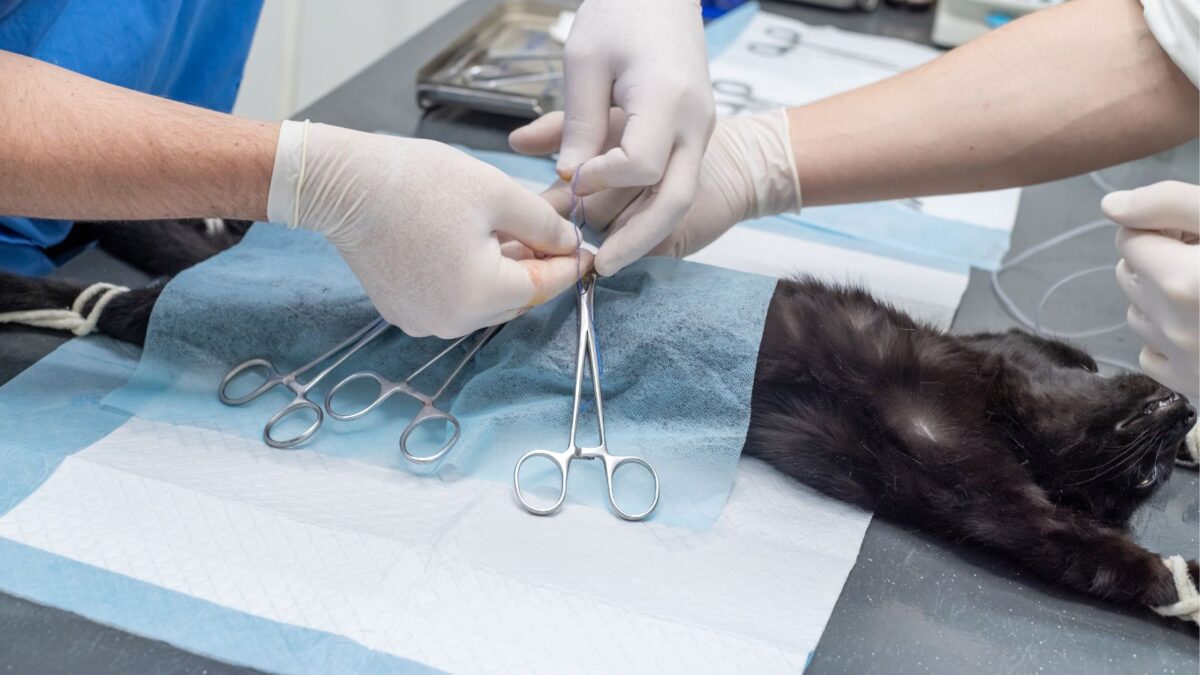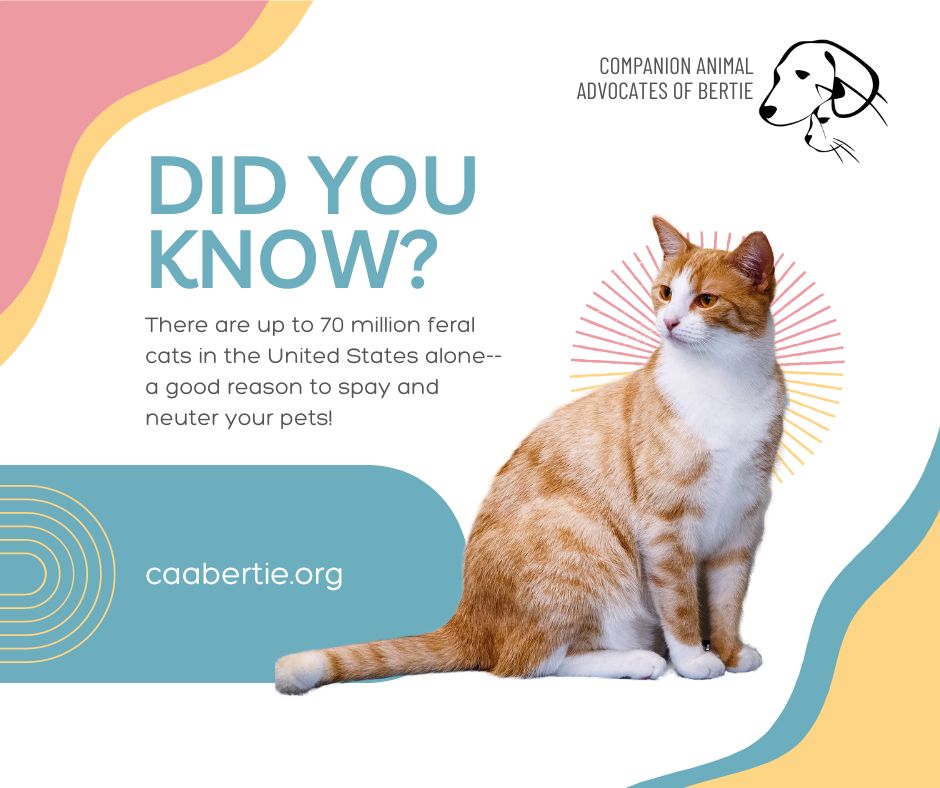Pets spayed or neutered are healthier and less likely to stray. Spayed or neutered pets are also less likely to become overpopulated. Spaying your pet can help decrease shelter and stray overpopulation.
By the end of this article, you will know the following:
- When to spay or neuter your pet.
- The benefits of altering your pet.
- Some important statistics about pet overpopulation and the related risks.
Age: When to spay or neuter your pet
Getting your pet neutered or spayed is essential to prevent specific health problems and prevent the possibility of unwanted pregnancy.
The age for the procedure is different between species. Your vet may recommend altering a cat before the pet reaches five months of age. On the other hand, the same vet may recommend the process at around six months if you own a canine. Your local veterinary clinic can guide you.
Let’s set aside puppies and kittens for a moment. if adopting a sexually mature pet, you should immediately proceed with the sterilization procedure.
The decision to spay or neuter your family pet depends on your pet’s specific situation. Most pets benefit from this procedure. It will make your pet a healthier companion, live longer, and be a better family member.
Your Vet Can Best Advise You: Discuss the spay/neuter procedure with your veterinarian. They will examine your pet and help you decide the perfect timing for the surgery.
1 – Spaying or neutering improves general pet health
Spaying or neutering your pet is one of the best decisions you can make for your and your pet’s health. It helps to reduce the chance of your pet getting cancer and other diseases, especially uterine infections and testicular cancer.
Spaying or neutering your pet is an easy and relatively painless procedure for your companion animal.
It also helps to reduce stray animal problems, with fewer cats and dogs roaming the streets. Fewer strays mean fewer problems with road safety and other pets and fewer diseases spread between animals and humans.
Another surprising advantage of spaying or neutering your pet is the potential for reduced savings on future pet medical bills.
Myth Busted: Altering your pet does NOT cause weight gain, as proven in a scientific study by Journal of the American Veterinary Medical Association (JAVMA) in 2013. The cause of weight gain is too much food, too little exercise…or a combination of both!
2 – Spayed or neutered pets wander less frequently
Spayed or neutered pets of both genders are less likely to stray. Wandering is arguably the most dangerous companion animal behavior.
Some areas have “trap-neuter-release” programs to help address the problem–especially for feral cat colonies. Unfortunately, such programming does not exist in Bertie County.
Spaying and neutering pets can eliminate an animal’s desire to wander off. Thus, it can reduce the number of stray animals in your community. Spayed or neutered animals are less likely to fight with other animals. They are also less likely to get struck by a car.
Unaltered males will often enter a pack or colony when one or more females are in heat, impregnating the female(s) and perpetuating overpopulation. Altered companion animals are less likely to become homeless and turn out one litter after another, resulting in public health concerns, including increased rabies.
Banfield Pet Hospital, the world’s largest veterinary provider, compiled some eye-opening statistics. They found that:
Unneutered dogs are more than twice as likely to be hit by a car or bitten by another animal as neutered dogs. The situation is even worse for cats–unneutered cats have 4 times the risk of being hit by a car as neutered cats. Unneutered cats are also 3 times as likely as neutered cats to be brought to the veterinarian fo treatment of an animal bite.”
Banfield Pet Hospital | “State of Pet Health 2013 Report”
Irresponsible Pet Ownership: The reality is sad; some people are poor owners who abandon or “dump” their pets due to unplanned pet pregnancies. That behavior adds to pet overpopulation in the community.
3 – Helping to end dog and cat overpopulation
Spaying and neutering your new pet is the only way to prevent the overpopulation of animals. By removing the reproductive organs of both sexes, spaying and neutering your pet can avoid the production of unwanted offspring. The sterilization procedure saves many animals’ lives.
Overpopulation is one of the biggest problems facing companion animals today. Many animals end up on the streets and in shelters due to a lack of suitable homes or unintended reproduction. Companion animals often lack survival skills since they are domesticated animals. They are not their wild ancestors!
Over six million unwanted dogs and cats enter American animal shelters annually. (More about that statistic in a minute). You may help avoid becoming another sad statistic by spaying and neutering your pet. In addition to controlling overpopulation, an alteration will reduce the risk of disease and other health issues–such as the spread of rabies and other zoonotic diseases.
4 – Besides cats and dogs, you can control pet rabbit populations
What about pets besides dogs or cats?
Spaying or neutering your pet rabbit is essential in keeping them healthy and happy. Since rabbits are very sexually active, you must get them neutered to avoid unwanted pregnancies. Do not introduce a second bunny until after you alter the first.
The House Rabbit Society notes that the procedure also allows your rabbit to live longer and healthier–with similar positive outcomes experienced by dogs and cats. It might also reduce your potential expenses on future veterinarian bills.
5 – Pet alteration reduces the pressure on your local animal shelter
Spaying or neutering domestic pets is one of the best ways to reduce the number of pets in animal shelters. Spaying also helps animals live healthier lives. Many people don’t realize that spaying and neutering their pets can help keep them from becoming overpopulated and ending up in shelters. About 6.3 million dogs and cats enter shelters in the United States annually, and only 4.1 million are adopted.
Spaying reduces the population of pet shelters by preventing unwanted litters. In peak health, a single unaltered female cat can produce four litters in one year. That point illustrates how spaying reduces the number of animals in pet shelters by nearly half.
You will do your part to reduce the number of unwanted animals entering shelters. It is the most effective way to reduce the number of homeless animals.
While the number of pets entering shelters may vary between states, Ross University School of Veterinary Medicine explains that spaying or neutering reduces the number of homeless animals across the entire country. Moreover, spaying also helps animals live longer lives, reduces their chances of becoming homeless, and protects them from some health issues.
Closer to Home: Locally, our county-wide animal shelter in Bertie County has only ten spaces for dogs. Despite their best efforts, local pet care workers must make some painful decisions.
6 – Neutering eliminates worrying about testicular cancer in males
One study claims that testicular cancer affects as many as 27% of unneutered male canines. Fortunately, responsible pet owners know that removing the testicles when the dog is a pup eliminates the risk.
A veterinary resource guide explains:
Neutered or castrated dogs cannot develop testicular cancer as they miss the normal cells that make up the testicular tissue.
veterinarians.org
7 – Spaying reduces the chances of breast cancer in females
Spaying reduces the odds a female pet will have breast cancer later in life.
Andrea Peda, DVM, explains:
“Spaying a female pet can help prevent infections and tumors of the reproductive tract, as well as breast tumors. The inability to reproduce itself even provides some health benefits for females.”
Dr. Andrea Peda, DVM, Associate Professor of Veterinary Medicine
8 – Neutered or spayed dogs and cats live longer lives
According to the University of Georgia, neutered or spayed pets live longer than their unfixed counterparts. The researchers analyzed over forty thousand dogs. They found that the average life expectancy of unfixed dogs was 7.9 years, and 9.4 years for neutered dogs. This difference is almost two years.
The study suggests that pets are happier and healthier when neutered or spayed. However, neutered pets still need vaccinations, dental care, and parasite control like unneutered ones.
A study by Banfield Pet Hospital found that neutered male cats and female dogs lived up to six percent longer than their unaltered counterparts. Similarly, neutered or spayed dogs lived up to nine percent longer. However, the number of unaltered dogs and cats is still rising.
Reverse this trend–alter your pet! You may be surprised at the difference in the lifespan of your furry friend.
Better Health Tip: After alteration, your pet still needs regular annual physicals, vaccinations, and a dental care exam. These good health habits will help your pet live a happy, long life.
Final Thoughts: To Spay or Neuter Your Pet is an Act of Kindness
While the term sterilization may have a cruel ring to it, the opposite is true. Your pet will need a few days of rest and healing, then he or she will be back to their typical (lovable!) behavior.
Don’t believe it? Just ask your vet. The veterinarian will undoubtedly advise you that your pet will live a longer life and prevent specific cancers. You also enjoy a calmer, better-behaved pet and contribute to ending pet overpopulation.
To spay or neuter your companion animals is the ultimate act of kindness.

